Your cart is currently empty!

Ice Fishing For Black Crappie
Of all the panfish species, black crappie are undoubtedly my favourite! If you’ve been following any of my social media accounts lately, you’ll notice I’ve been on a crappie-kick. Early ice usually leads me to target panfish first as they can be found in many smaller lakes as well as shallow/sheltered bays that typically freeze first. Spring-fed waters and areas with current require more time to freeze and in some cases never become safe enough to venture out onto. Please be safe this ice season as with the warm temperatures it is still quite early and many bodies of water have yet to freeze over. Below you will find some tips and tricks I use to locate and successfully target black crappie through the ice.
Location
Location is the first and most important step. You can have all the right gear but if you’re nowhere near fish, the day can be pretty uneventful. I typically focus on two types of areas: weedlines (especially the inside turn or the ‘armpit’), and adjacent basins to these weedlines. Crappie are often on the move so it’s ideal to drill holes throughout these areas to hole-hop and stay on top of fish as they cruise around. During low light periods, crappie can usually be found in the shallower waters and will then move out to deeper waters during the day where they suspend in the water column feeding on insects and baitfish. You can usually locate weedlines by looking at bathymetric maps and by using Google Maps in satellite view. I will drop a jig or spoon down and hook some weeds intentionally to ensure they are healthy and green. This means they provide oxygen and cover for insects and baitfish as well as their predators, the crappie.

Gear
Just like any type of fishing, you can get by on basic gear or you can invest in some items that will increase your success and maximize your time on the water. Ultralight and light rods can help you to detect those very light bites as well as the upward bites that crappie are known for. I’m enjoying the St. Croix Legend Rods that have the spring tip indicator and also I have swiped a couple of Eric’s Tuned Up Custom Rods as they have ultra-sensitive coloured tips so it’s easy to see and feel when a strike occurs.
I typically spool my reels with 2-3 pound fluorocarbon line as it is pretty much invisible. The light line also helps tiny jigs and lures to move about naturally, if you jig them properly. A reel with a nice smooth drag protects the line under tension and allows me to battle it out with these fish without worrying too much about breaking them off. I will back the drag off a bit when a larger fish is hooked up so as not to put too much pressure on the line. I have a few different reels including the Shimano Sedona, Rapala Concept (spinning and inline), Black Betty 6061 by 13 Fishing and some others.
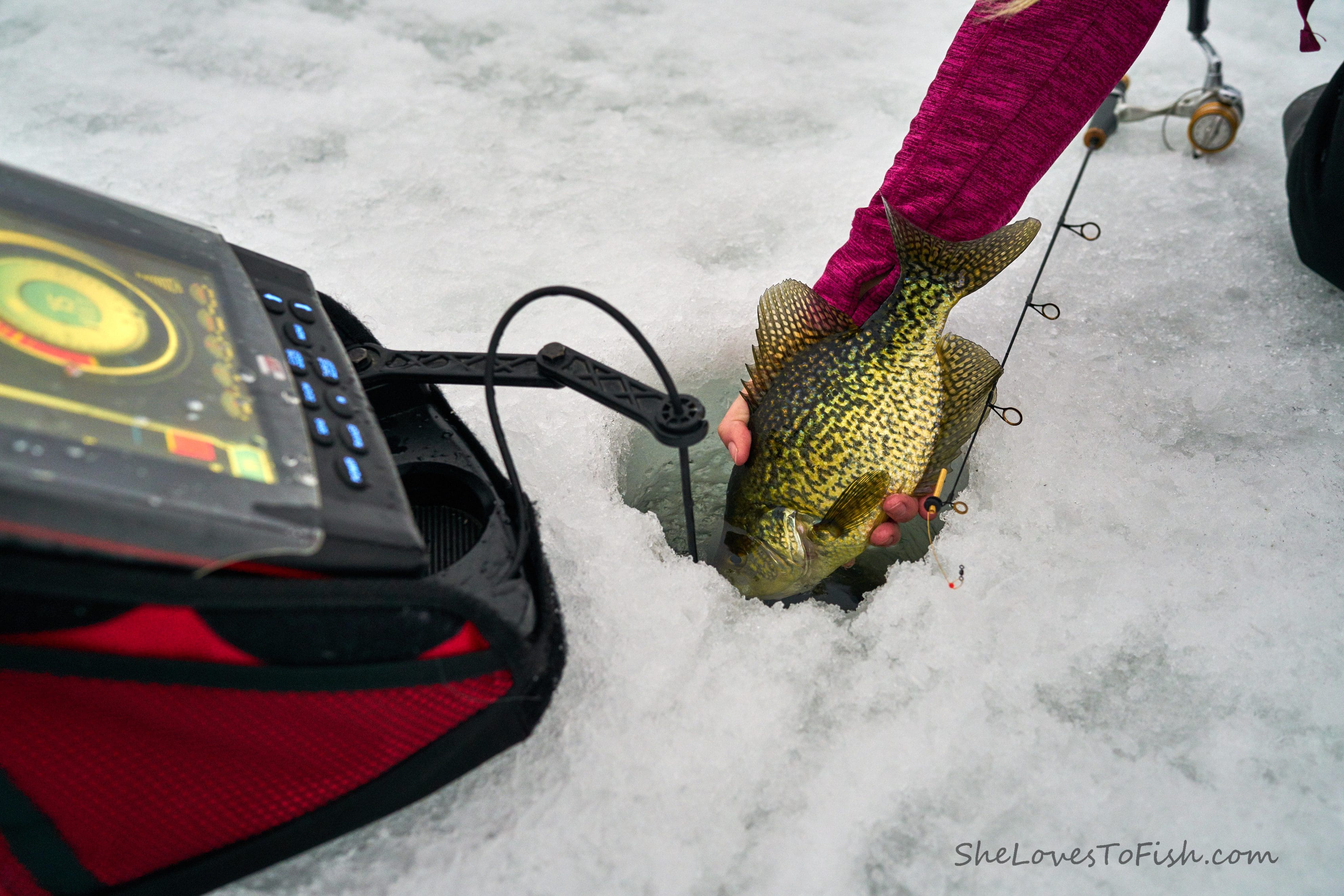
Electronics
A flasher provides information about the structure below the ice hole and what’s in the water column using a cone shaped beam that widens at the bottom. It is not a necessity, but once you get your hands on a flasher it’s hard to want to fish without one. Most flashers will provide a depth reading as well as indicate bottom hardness by using a colour system. Warm colours (usually red or orange) indicate a dense signal. This can mean a hard rock bottom or a red mark indicating a larger fish. As the colours cool off (blue or green) it means a weaker signal. This could mean a smaller fish, a fish sitting outside of the beam or a soft bottom (weed or mud). When a fish is present in the water column, a flasher will help you to determine the general size and mood of the fish. What I love about using a flasher is by seeing the mood of the fish, I can adjust my technique accordingly. Sometimes fish will crush anything in sight, while other times you really have to work for them by trying experimenting with different jigging techniques or even switch to another presentation. Keep in mind that there are many flashers on the market with various price points and different features, so my comments above are very general and may not apply to all models of flashers. I have used few models over the years including: Vexilar FL-18, Humminbird Ice 45 and 55, MarCum LX-5. I am currently running the MarCum LX-9.

Presentations & Tactics
There are endless options out there when it comes to presentations for crappie and I am always trying new ones each year. Below are a few I’ve been using recently with success. I like to tip my jigs and spoons with soft plastics to provide scent and enhance the action.
Spoons & Jigs
- Northland Tungsten Sliver Spoon
- VMC Flash Champ Spoon
- VMC Tingler Spoon
- Ultra Light Rippin’ Rap
- I also use a variety of 1/16th and 1/32nd ounce jigs
Soft Plastics
- Berkley Gulp! Waxies
- Trigger X Moustache Worm
- Berkley Gulp! Ice Minnow Head
- Maki Plastics (something new I have tried this year)

Workin’ It
Each presentation has its own unique action which is why there are so many great options out there. Whenever I tie something new on, I’ll drop it just a few inches down the hole and give it a test run to see how it looks in action. It’s easy with these tiny jigs and lures to work them too aggressively, so I highly recommend practicing first. With the spoons, I will pop them to see how they flutter back down, and then use a quick quivering motion. These are the two main ways I work my spoons.
Originally I used the larger Rippin’ Raps to call in walleye and found that the Ultra Light version works just the same for bringing in crappie. I’ll hop around hole to hole and first take a look with my flasher to see if there’s any activity on my screen. If I see fish, I’ll start with a spoon or jig and see if I can entice them to bite. If there are no fish, I’ll drop the Rippin’ Rap down to call any nearby fish in. If nothing shows up or if I am catching perch, I will fish it for a few minutes and move on to the next hole. Being mobile is key.
It’s been a fun season so far and I look forward to upcoming adventures out on the ice. I’m hoping for some consistent cold weather so some of the larger bodies of water will be locked up. To see my latest catches, join me on my social media pages listed below. Thank you for reading!
3 responses to “Ice Fishing For Black Crappie”
-
On Tue, Jan 24, 2017 at 17:26 Ashley Rae – SheLovesToFish.com wrote:
> > Thanks Ash > > > > > > > > > > > > > > > > Ashley Rae posted: “Of all the panfish species, black crappie are > undoubtedly my favourite! If you’ve been following any of my social media > accounts lately, you’ll notice I’ve been on a crappie-kick. Early ice > usually leads me to target panfish first as they can be found in ” > > > > > > > > > >
-
Do you practice catch and release, or do you cook them up as well?
-
Catch and release for me, but I kept a few once to try them out!
-

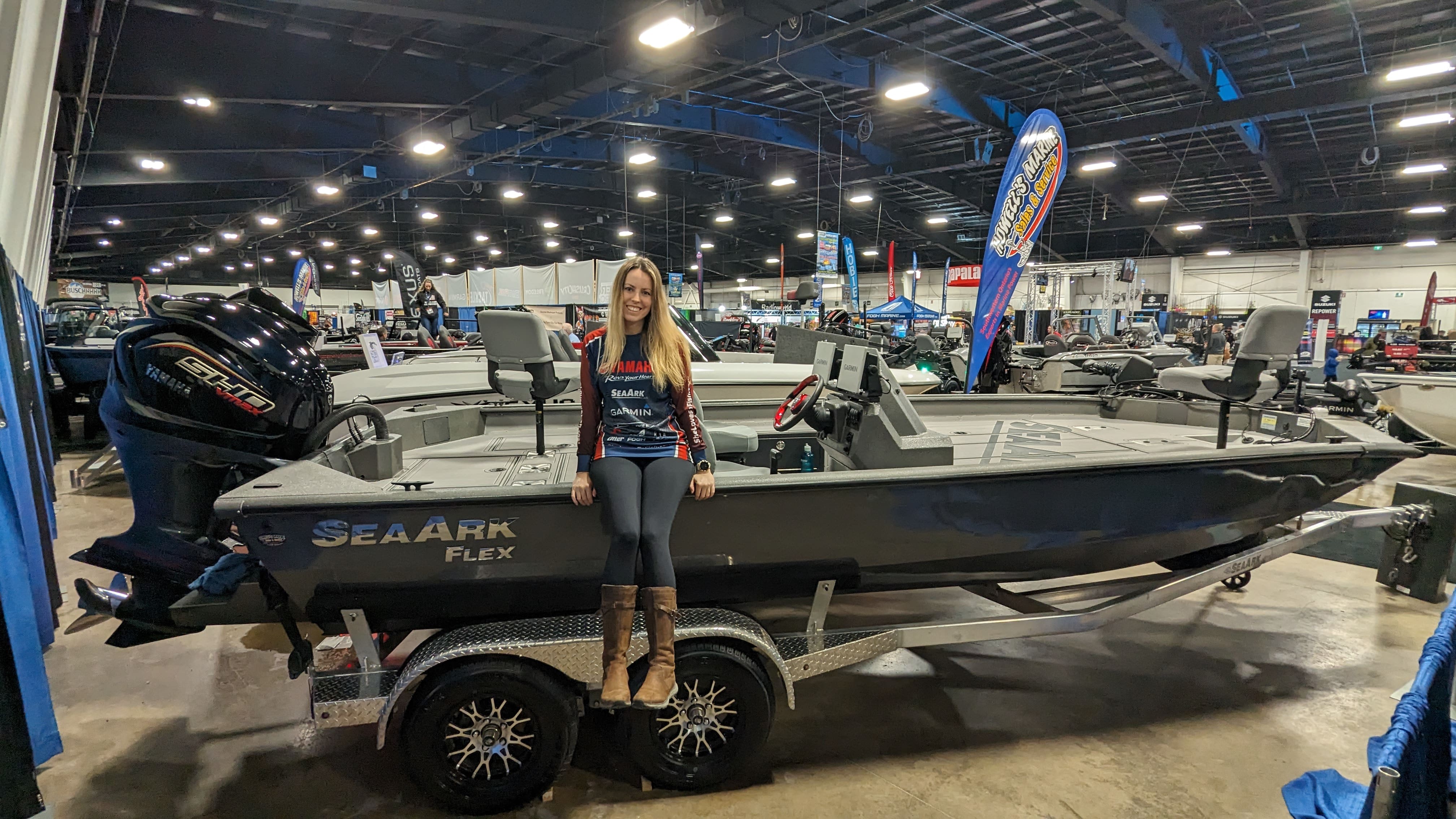
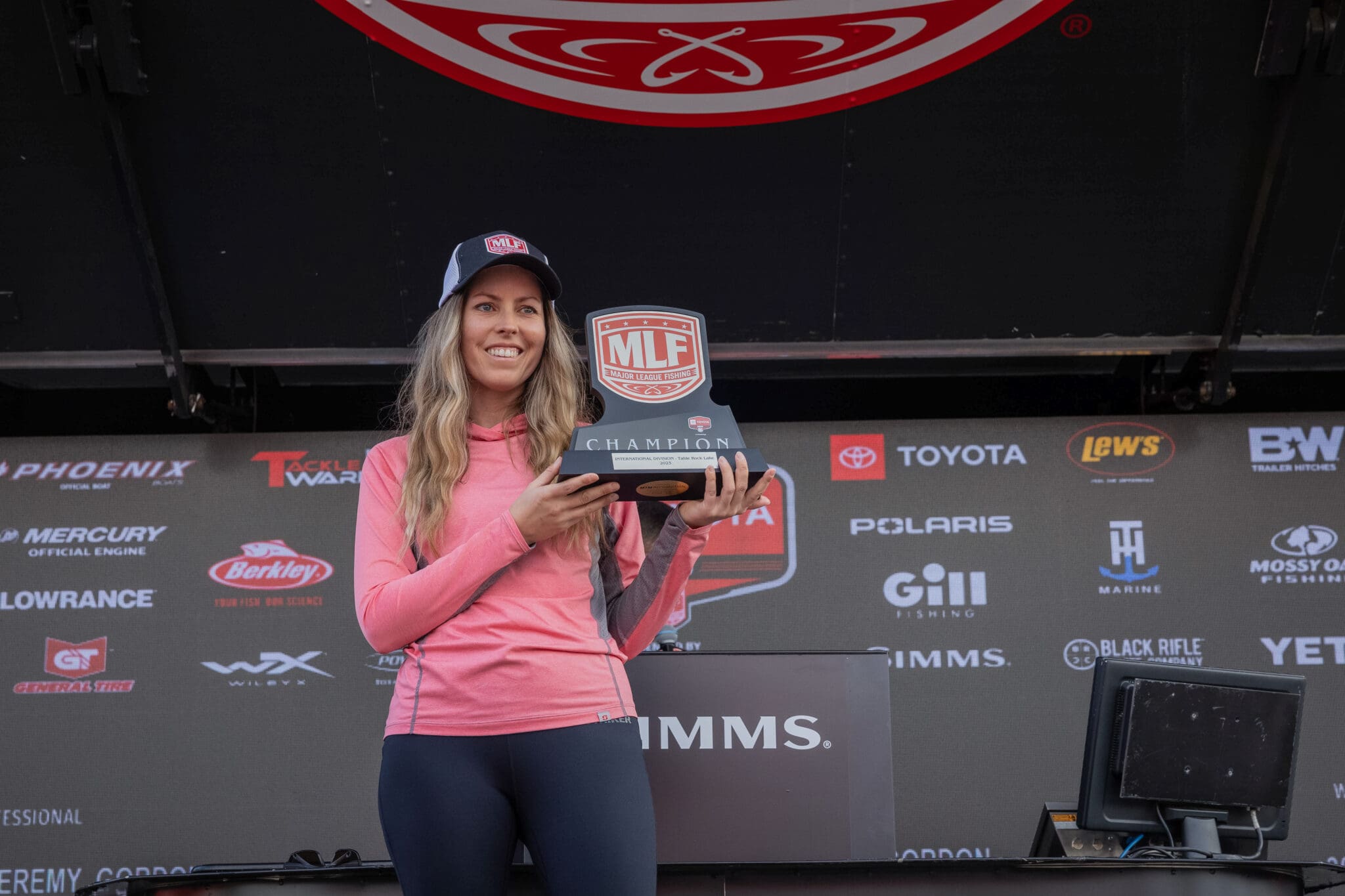
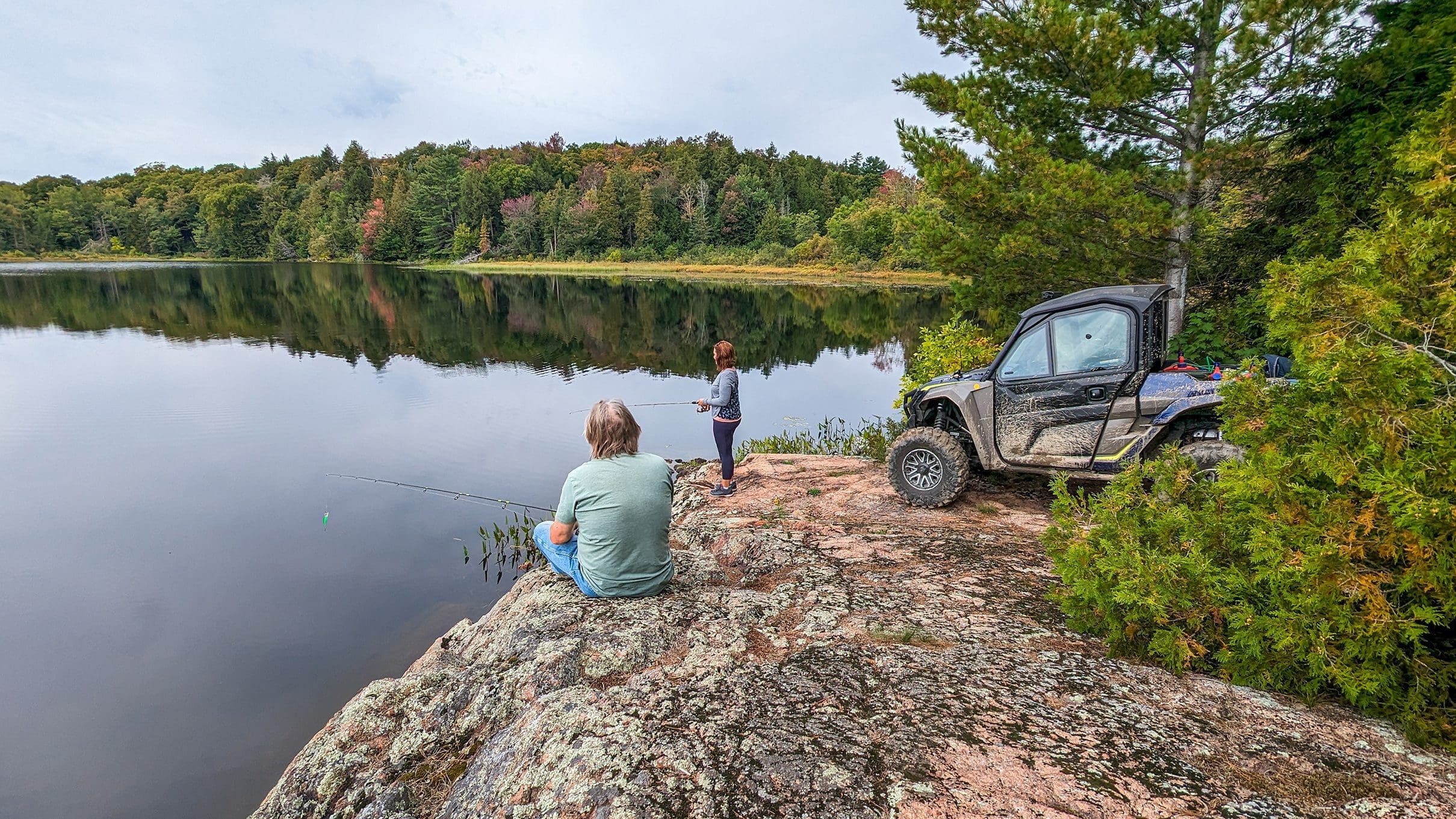
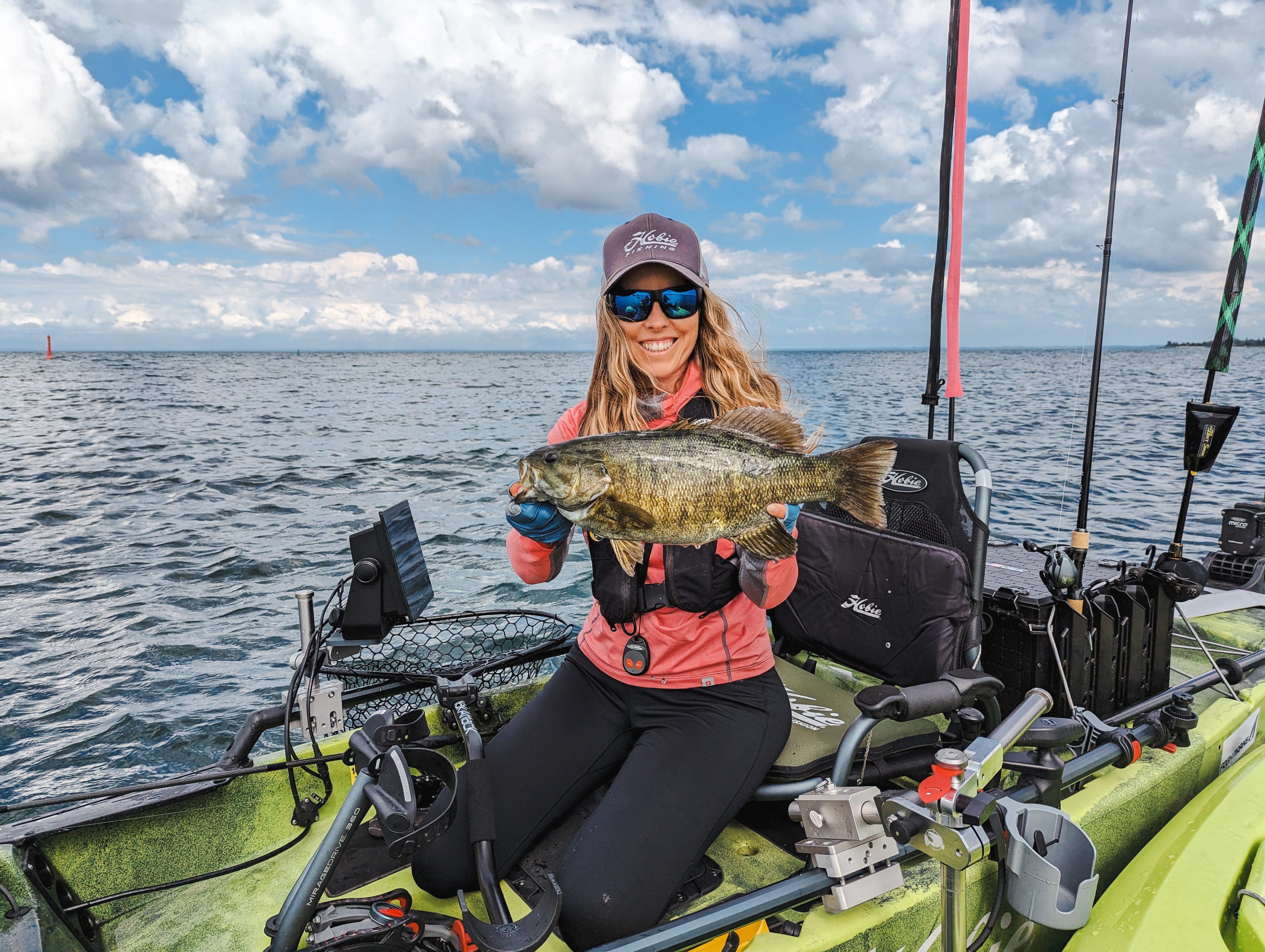
Leave a Reply